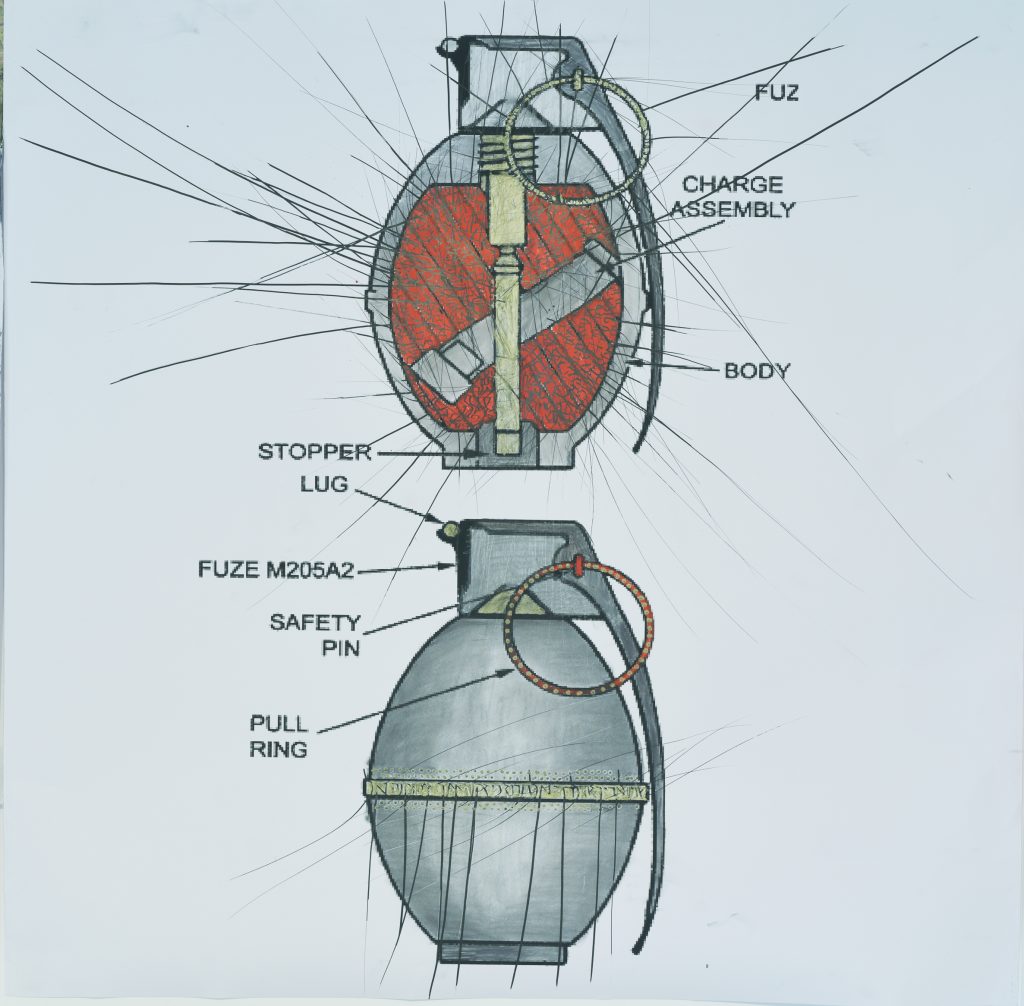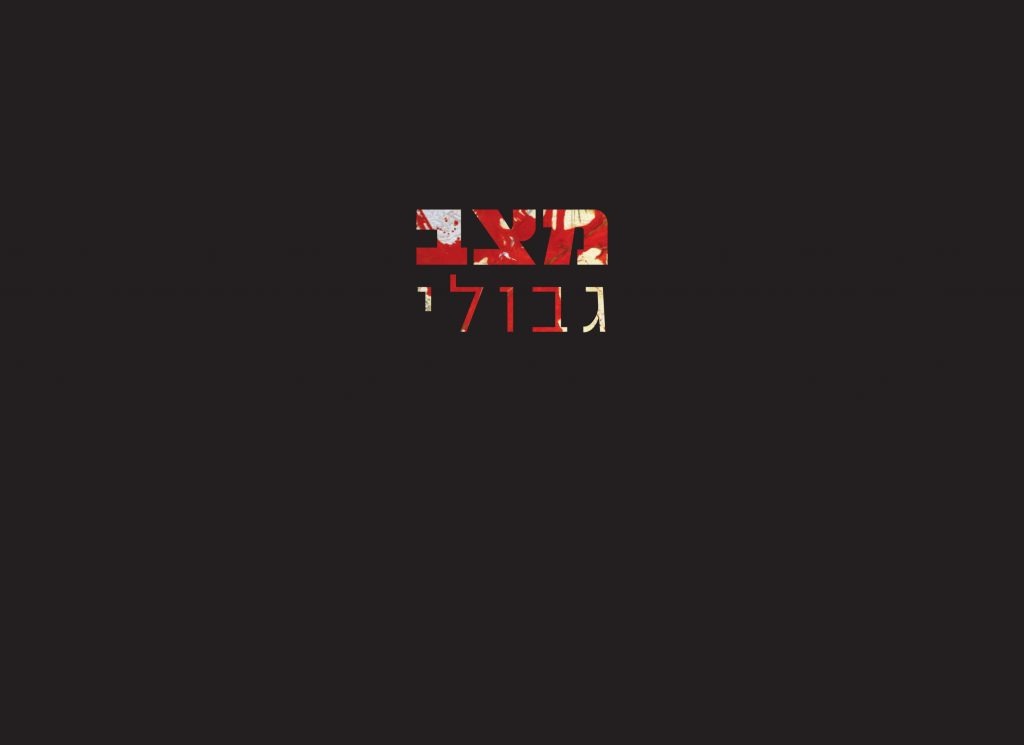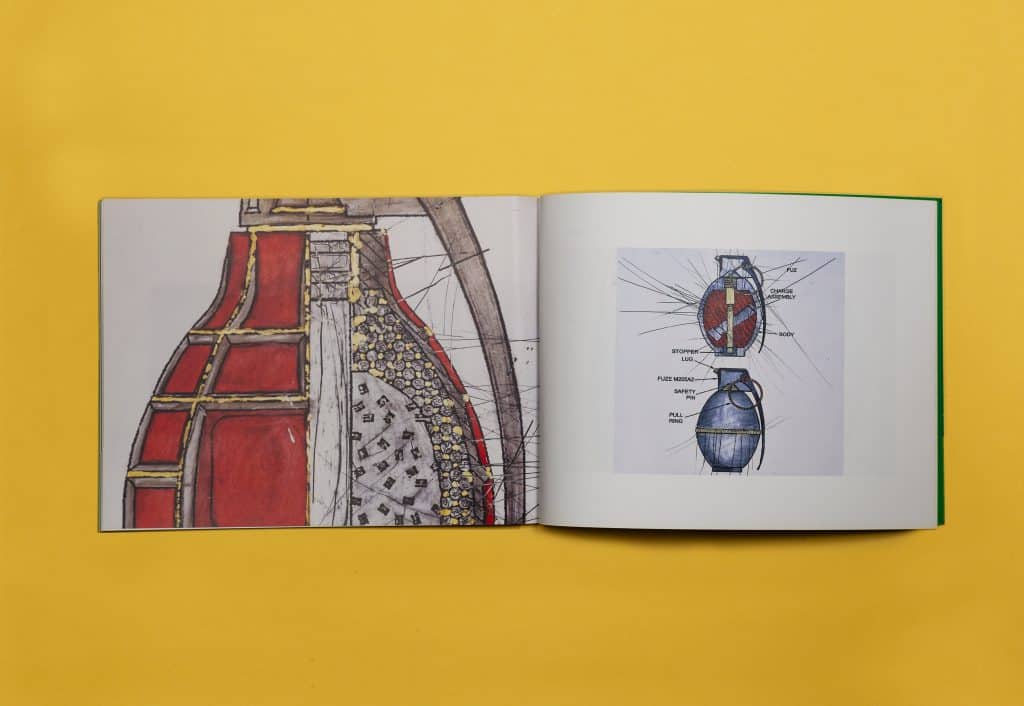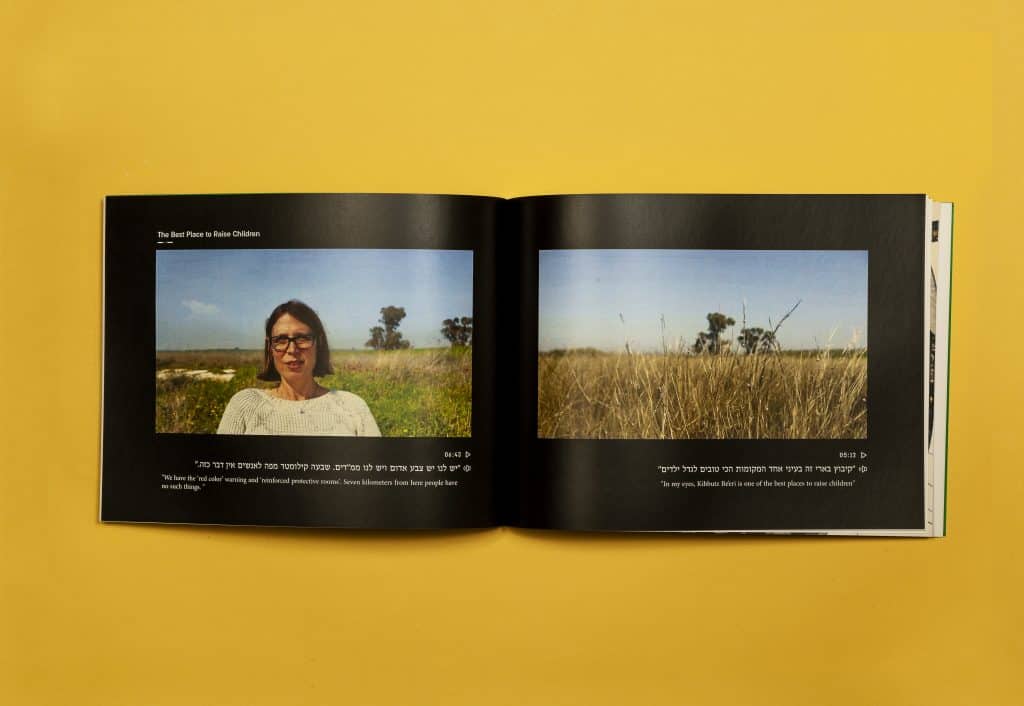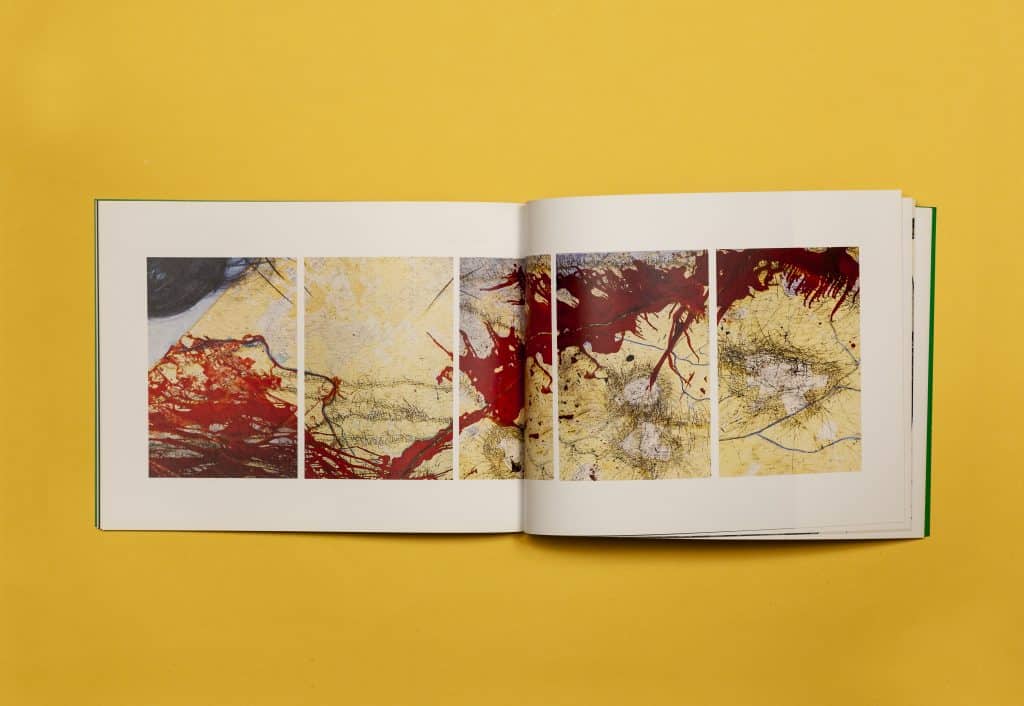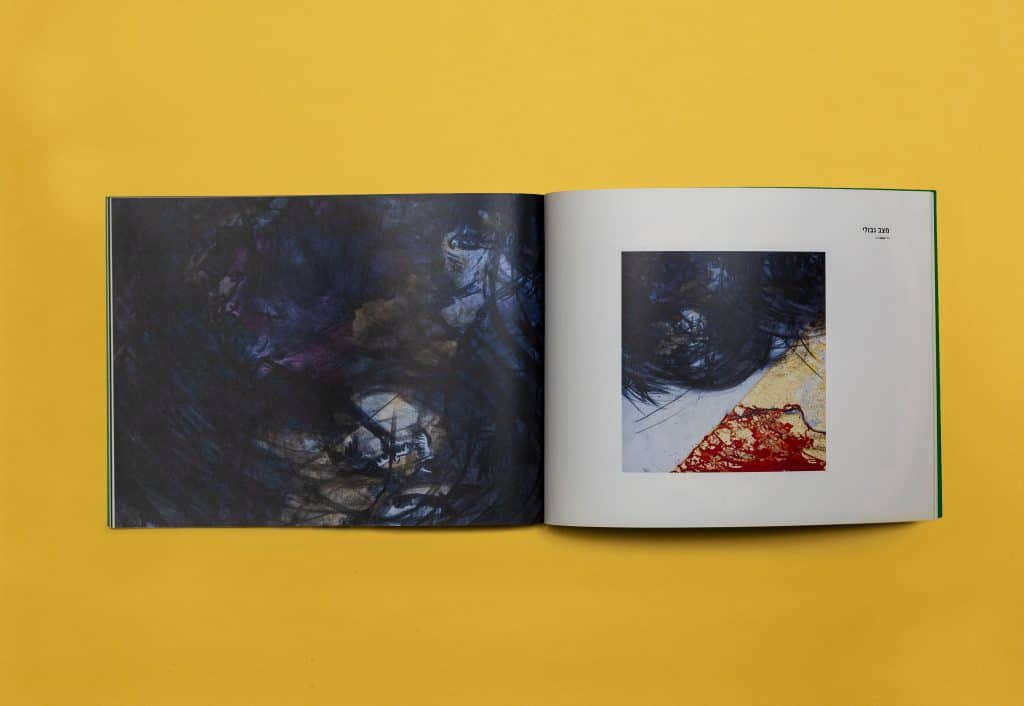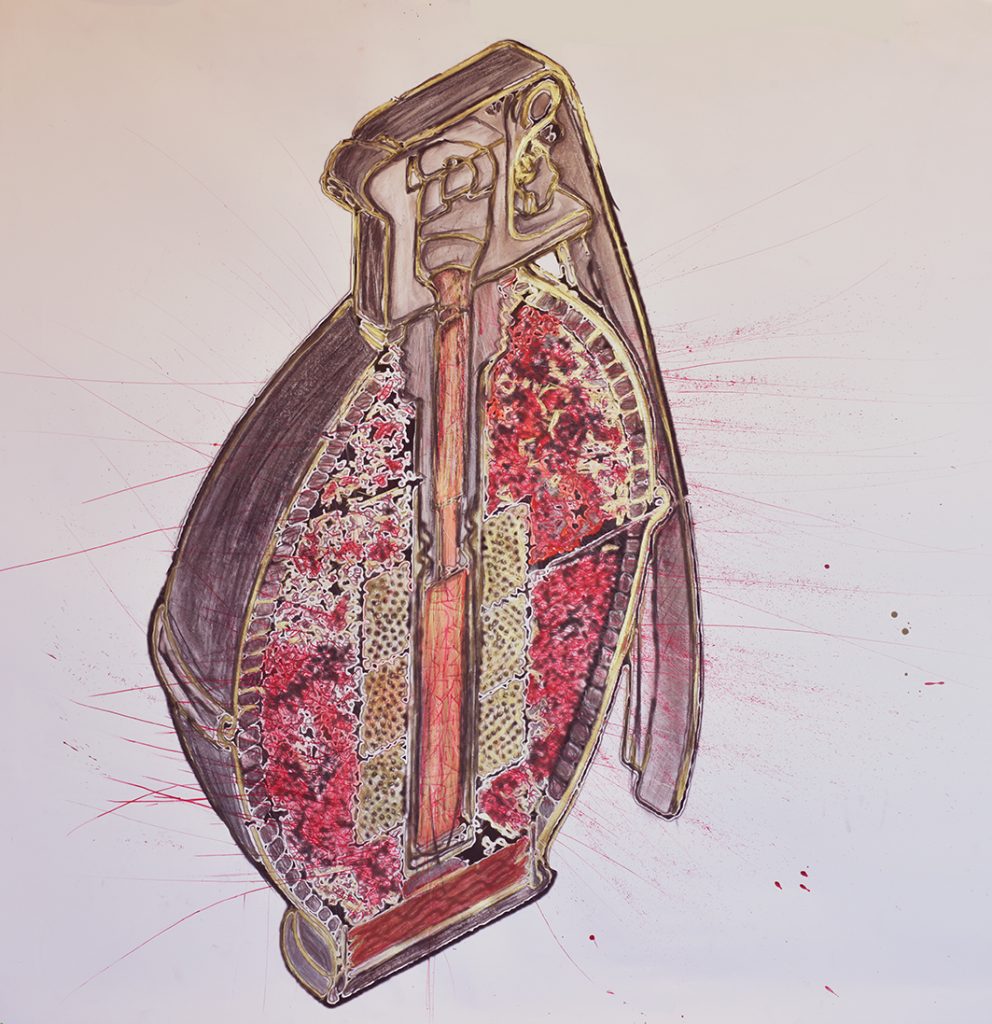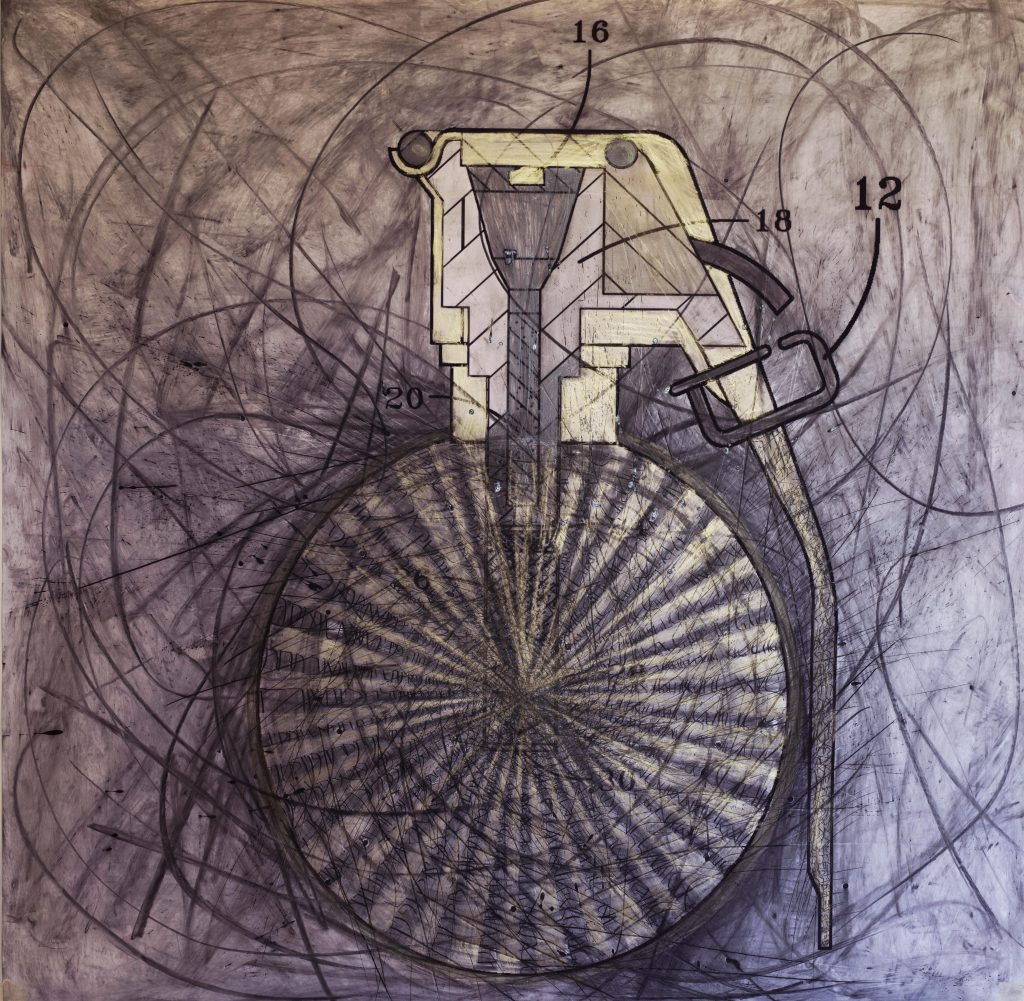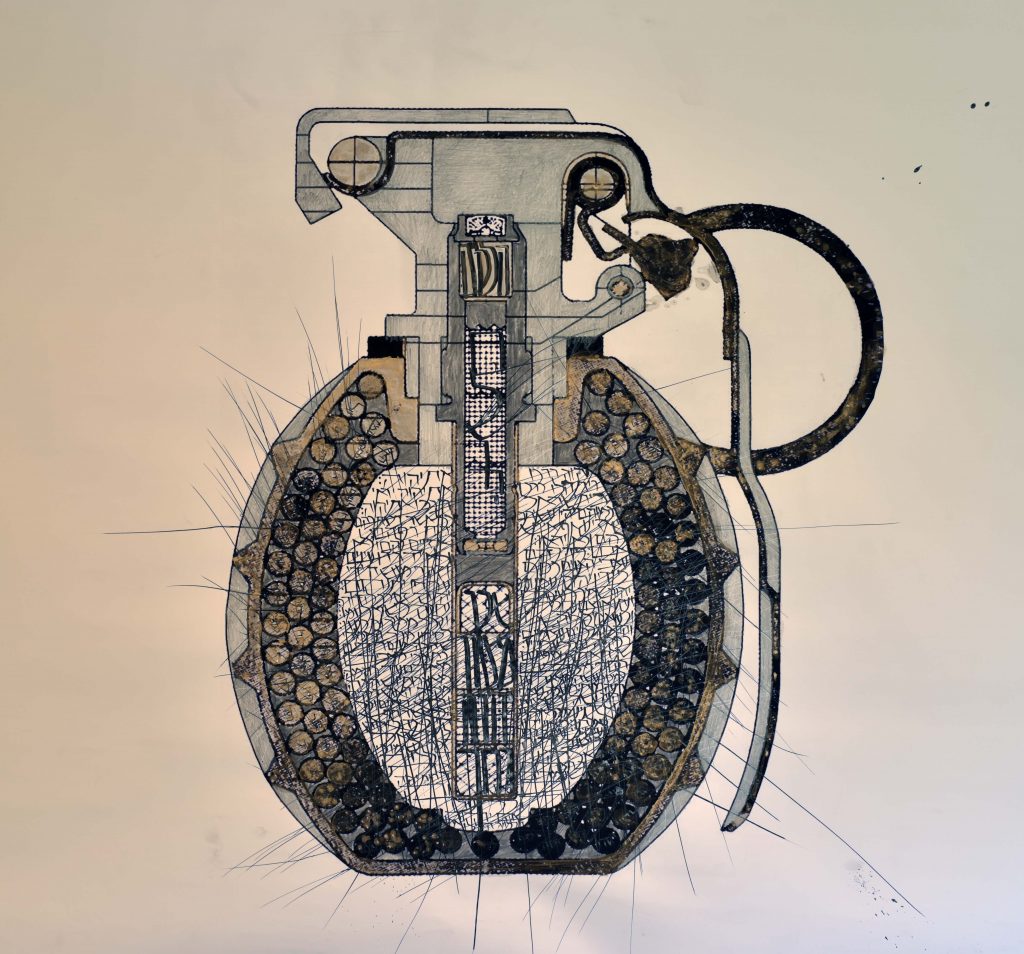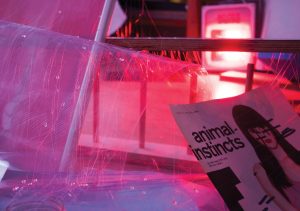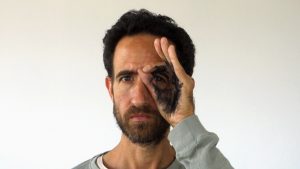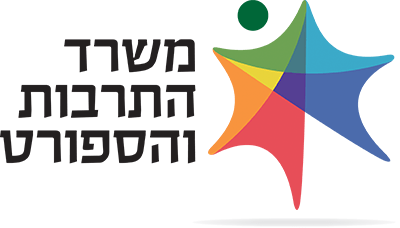Tamar Nissim and Meirav Davish Ben Moshe’s exhibition deals with life near the border in the Gaza envelope; it deals with the anxiety, lack of control, the borderline, physical and mental condition.
Meirav Davish Ben Moshe, an artist, and landscape architect, studied art in New York and has a master’s degree from Bezalel. A graduate of the Artists for Social Change program in Musrara, and in recent years has been working on the sizzling and bloody border between Gaza and Israel. As a landscape architect, she is accustomed to reading maps and working on drawings, translating reality into 2D. She clings to the Gaza segment on the map, which she’s increased to a size of 1:5000, about 12 square meters – the edge of Khan Yunis – Sderot in the north – and Netivot in the south. She’s trying to figure out what is in the longitudinal white spot, in the border area, which has been deleted by the Israel Mapping Center. She looks at the map as a battlefield, a sand table where forces are moved, maneuvers and fortifications are planned; another fence is built, and nobody is talking. The burrows and tunnels crossing from Gaza in the west to the surrounding settlements on the east, on both sides of the border, are painted in rounded Arabic script. The text reprises the first and second surahs of the Qur’an, a sacred text that glorifies God. The words become a weapon in the bloody war of culture and religion between the Israelis and the Palestinians. A Hebrew text from the Book of Psalms is written around the Israeli settlements. The text encircles the settlements like a prayer; it serves as a protective fence against the force that threatens to erupt home. The red paint spills and bleeds, gets out of control, gets in between the houses, between the fortifications and the tunnels; it is dynamic and stains both sides.
A black sooty cloud hovers over the sea from the west, threatening to penetrate, advancing in a circular motion; inside it are flocks of ink, drawn to the garbage dumps, to the rotting remnants, which stand on the border between Gaza and Israel. Anxiety has become a stain absorbed in the map, indelible marks. The blurs of densely written words are supposed to calm, protect and ensure that it’s going to be okay, but it won’t be, she knows.
Next to the large map, which reveals the marks stored beneath the surface, she places drawings of hand grenades that are based on technical engineering drawings from military literature. Studying the mechanism and structure keeps the grenade on the technical level, suppressing the realization that it is a bomb designed to kill people. The threatening bomb translates into a plastic language. The size is amplified and dissociates from the actual size, adapted to the human palm. The grenades in the paintings are decorated as glittering objects (gadgets), on the verge of kitsch, like in ancient times when the weapon was decorated and adorned, an object of passion and a representation of power. Meirav Davish Ben Moshe embellishes the grenades with words from the Book of Psalms, which we use in times of crisis or disaster, with a request and plea to a protective and rescuing God. The words are written as stylized aesthetic calligraphy in the center of the grenade body, in the iron pellets designated to explode, or within the self-ejecting mechanism. The letters splash out, the lines thrust on, and the density creates a decorative texture. Meirav works with gold, red and black, and the shape corresponds with the pomegranate fruit and the pomegranates that adorn the Torah scroll, shaped like jewelry and perfume jars.
In her work, Meirav asserts the state of anxiety, the forceful discourse that dominates our reality; the Jewish and Islamic scriptures serve us in gaining control and power, justifying occupation and settlement instead of values of humanism and love for the other. The fear of the next war sizzles beneath the surface; it is present and threatening. There’s a sense that we are on the threshold, not in control, in a borderline situation, wallowing in the chaos around us, blindfolded.
Tamar Nissimhas a bachelor’s degree in textile design from Shenkar and a master’s degree Mainly engaged in video and performance. She is displaying a video work in the screening room: “The best place to raise children,” which deals with life in the shadow of constant danger and the ability to adapt to the deceptive reality between routine and war. Tamar Nissim, the daughter of a father who was seriously wounded in the Six-Day War, deals with the impact of war and violence on the home front population, on women and children, and on the ongoing price we pay for it.
In previous works, the woman’s figure, the mother, the wife, stands out in a social and political context. In “Mordechai and Me” (2010), she polishes Mordechai Anielewicz’s statue, the myth of the heroic soldier. In “The announcement” (2015), she displays a childhood memory, a girl happily running to tell her friend about her father’s injury in the Six-Day War. She deals with war’s euphoria, the girl’s pride in her heroic father, a narrative that Israeli society has weaved and imprinted in the hearts of its citizens. In “Care for the Chicks” (2016), she dealt with the evacuation of children from settlements during the War of Independence. The film’s protagonists (whom Tamar portrays) are members of kibbutzim evacuated during the war. One decided to leave the settlement and evacuated with her children during the war, and the other stayed. The film is based on testimonies of women who express the conflict between self-loyalty and the need for approval from the kibbutz establishment; the difficulty of dealing with social criticism.
In the current video, Tamar photographed ten women from Beeri, aged 18 to 90, in the open fields outside the kibbutz. She stretches the line between the landscape’s pastoralism and the war that threatens to break out on the horizon. She brings a sequence of female characters, one after the other, who all tell the story of dealing with fear during the war and with life during periods of calmness, accompanied by the feeling that the quiet is only temporary. Coming to terms with the situation, dealing with the fear by reducing its impact on daily life, choosing to stay, and clinging to the place and community life are prominent in the women’s words. These constitute a kind of screen that allows one to deal with the harsh and deceptive reality. The crack only opens when the women talk about anxiety for their young children and dogs. In her work, Tamar Nissim examines how women react to the frightening reality, stress and conduct themselves within it. A question arises between the lines: How much we are channeled according to the narratives inherent in Israeli society, how much we see the reality before us, accept it, or deny it, and the irony of the statement “the best place to raise children.”

